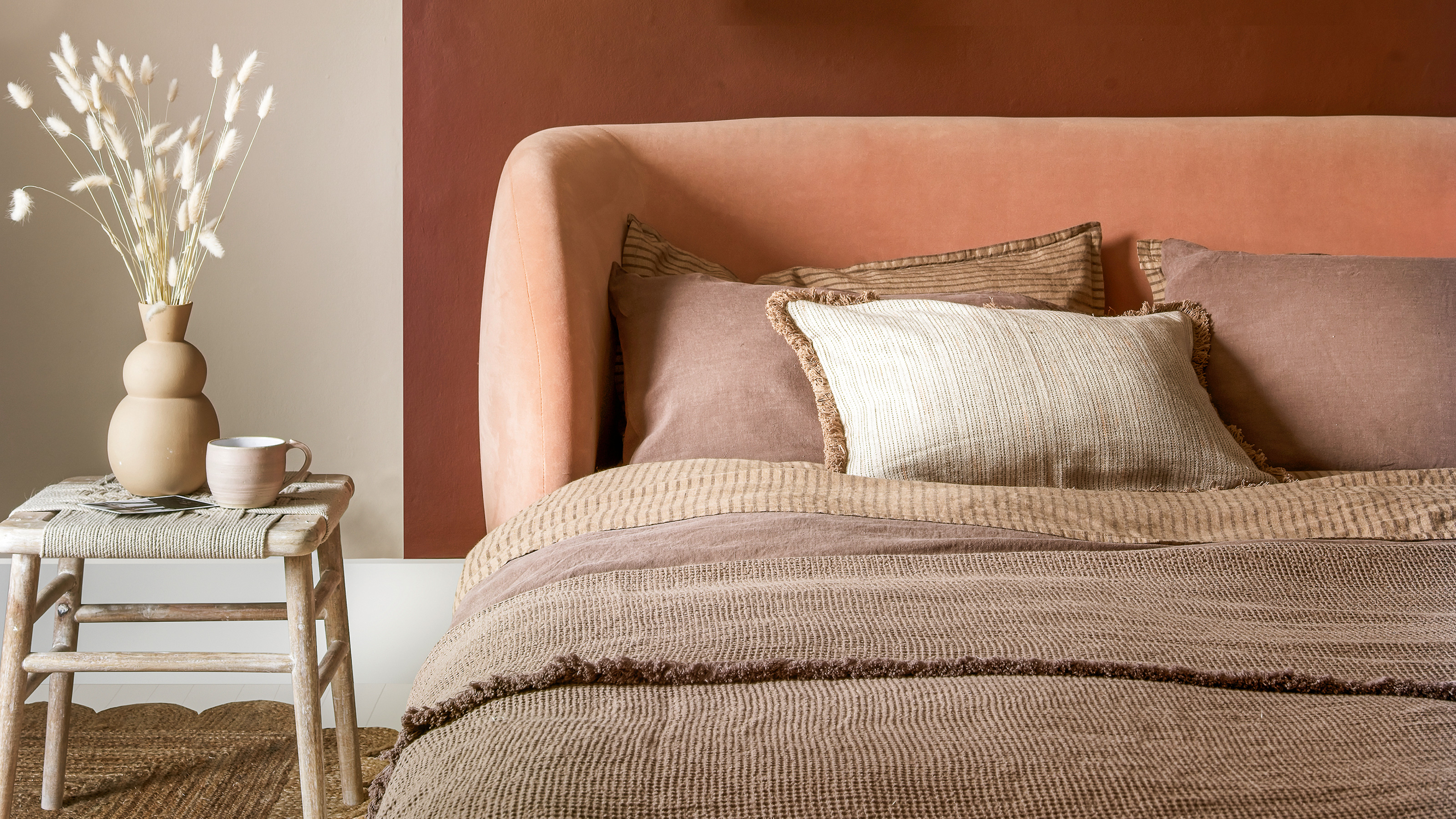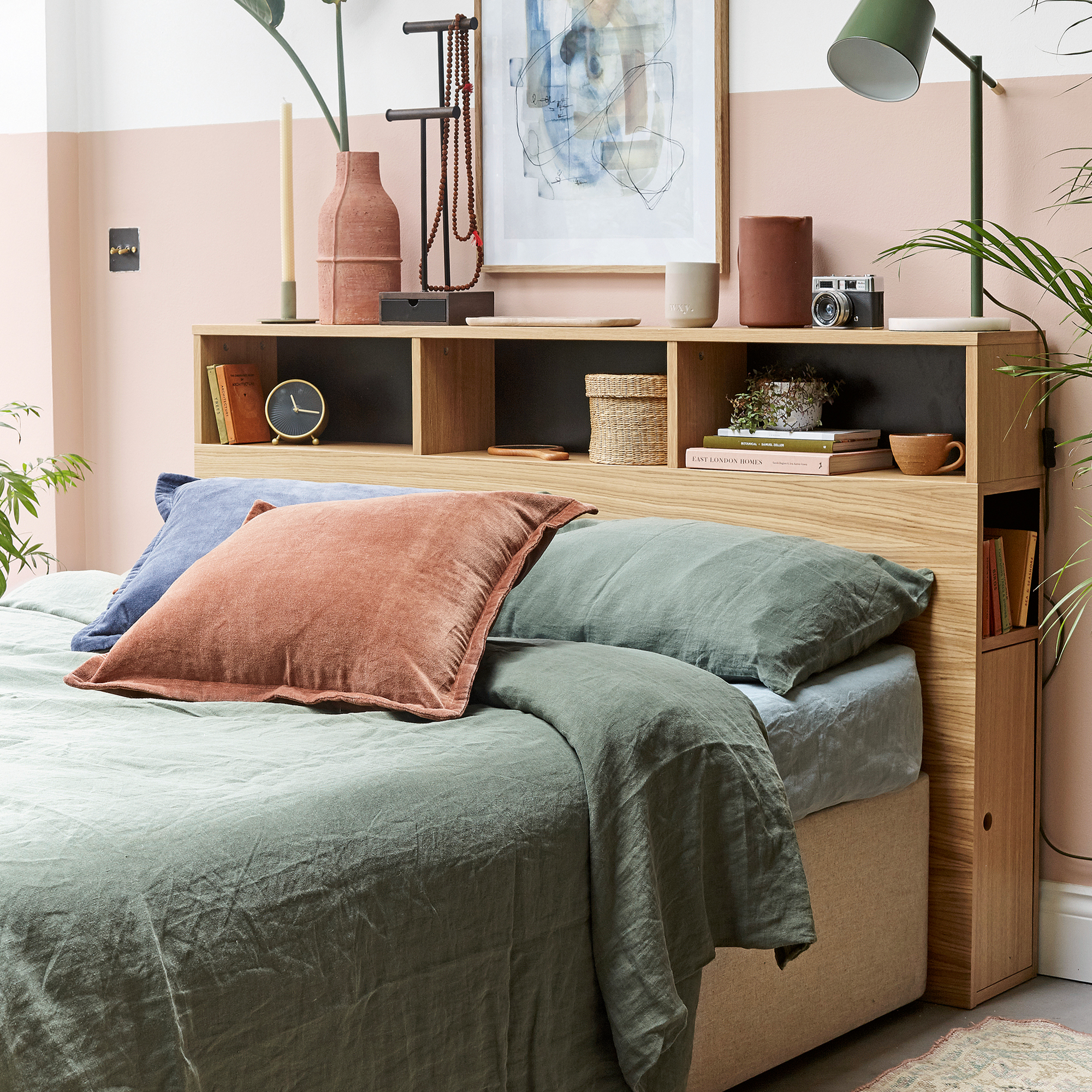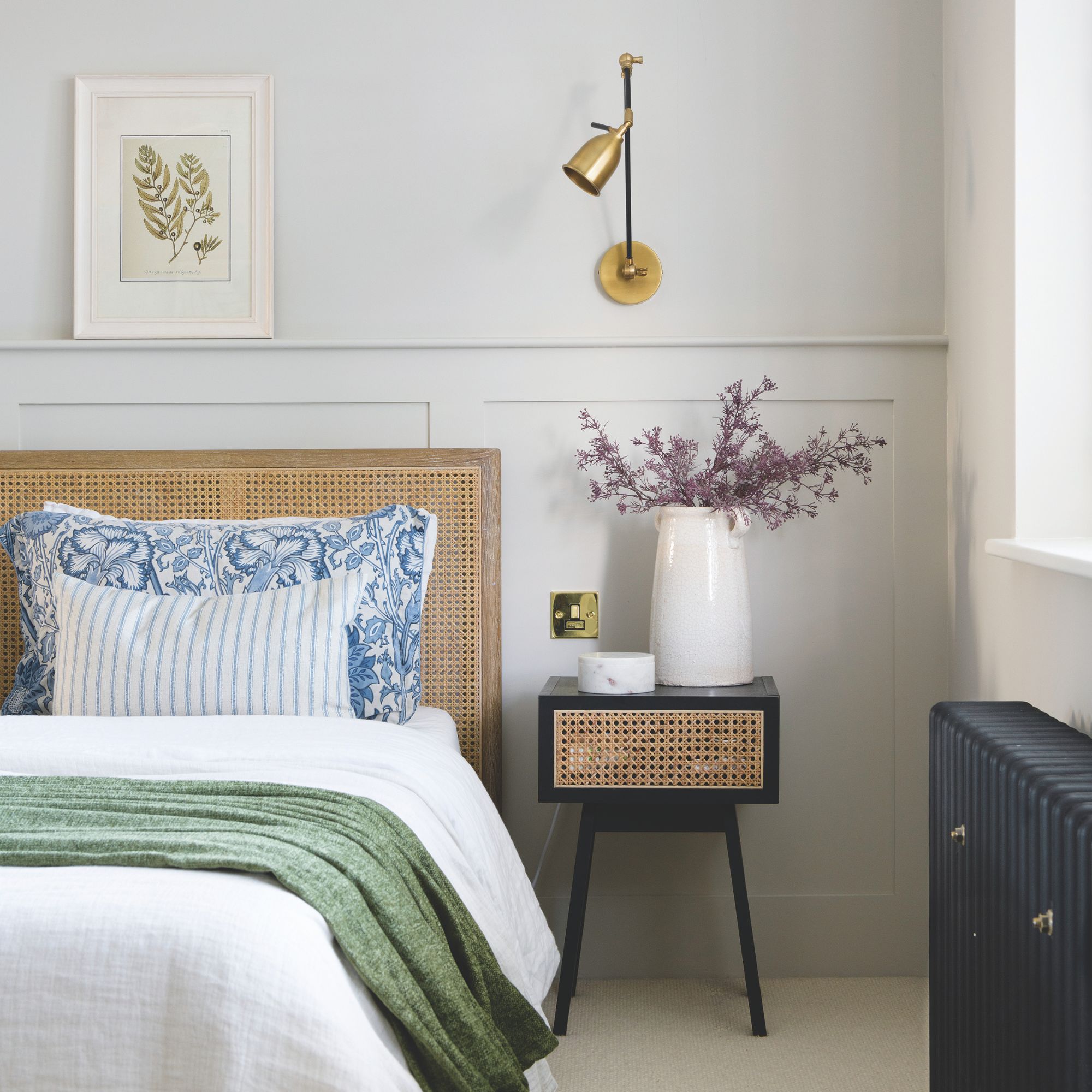What is a foam mattress and is it the right choice for you? I asked the experts
Wondering what the advantages and disadvantages of a foam mattress are? I asked a range of sleep experts for their thoughts


If you’re looking for a new mattress, you might be confused about all the different types of mattresses available. I've been writing about mattresses for a while, and 'what is a foam mattress' is a common question I hear.
Finding the best mattress for you is no mean feat. Different mattress styles suit different people depending on a range of factors including sleeping position, body weight and material preferences.
A foam mattress can be a budget-friendly option, but is a foam mattress comfortable, and what are its other benefits and disadvantages? As a sleep-product tester, I’ve tested more than 20 mattresses over the last few years and am here to talk you through the pros and cons of foam mattresses.

What is a foam mattress?
It may sound simple, and it is. A foam mattress is a mattress made from one or more layers of foam.
The main difference between a foam mattress and any other type of mattress is there are no springs used in its construction. This kind of all-foam design is a fairly modern affair, with most traditional mattresses featuring a mix of ether open coil springs or pocket springs mixed with comfort layers.
Most foam mattresses on the market also now include at least one layer of memory foam. This popular foam moulds to the shape of your body as your body heat warms it, gently cocooning you to offer cushioning around pressure points like hips and shoulders.
‘They are different to the traditional spring mattress, with metal springs or coils and a thin layer of foam to support your body,’ agrees Rex Isap, sleep expert and CEO at Happy Beds. ‘Instead, foam mattresses are typically made from a blend of memory foam and polyurethane foam [sometimes called PU foam], along with other foam materials.
Sign up to our newsletter for style inspiration, real homes, project and garden advice and shopping know-how
How is a foam mattress constructed?
Most foam mattresses are made from layers of foam rather than one solid block of a single type of foam. ‘Foam mattresses can have several layers, up to and including more than five layers,’ says Rex from Happy Beds. ‘These layers can vary by budget and type of foam mattress'.
'Foam mattresses are made from layers of different densities' he continues, and these different density layers do different jobs, such as providing a firm foundation for the mattress or cradling the body.
The top layer of a foam mattress is the comfort layer. ‘The comfort layer is within the first few inches of the mattress and provides the cushioned surface that many associate with foam mattresses,’ says Rex.
The foam used in a comfort layer is often memory foam, gel-infused memory foam, or latex foam. These foams are springy and aim to alleviate pressure points while we sleep, such as cushioning the shoulders and hips. Gel-infused memory foam also aims to help keep you cool as the gel absorbs your body heat. Latex foam is a natural alternative to memory foam.
Under the comfort layer is the support layer. Sometimes the support comes from more than one single layer. ‘The support layer will do exactly that, support your body as you sink into the mattress,’ says Rex. Support layers can also help to maintain the mattress structure.
These support layers are then combined with a base layer that's usually made from much denser foam and provides the foundation of the mattress.

What are the benefits of a foam mattress?
1. Great for cushioning
The cushioning that foam mattresses offer is great for those who suffer from pressure aches and pains when they sleep. ‘Side sleepers, in particular, benefit from a foam mattress as it reduces the pressure on the joints, especially if you tend to sleep on one side,’ says Rex from Happy Beds.
‘Those who have aching joints will also tend to sleep better on foam mattresses due to the mattress moulding to the body shape’ Rex continues.
2. Great motion isolation
If you’re often woken by a restless partner fidgeting in bed, a foam mattress could help alleviate your frustrations. Foam is great at absorbing any movements, which means a foam mattress is great at motion isolation. Because there are no springs used in the construction of a foam mattress your partner won’t create vibrations that travel through the mattress when they roll over.
‘Thanks to its density and responsiveness, foam helps prevent movements from travelling across a bed to disturb your sleep partner' agrees Scott Witherall, Product Development Manager at Bensons For Beds. 'So if you’re a light sleeper or share a bed with a real wriggler, a memory foam mattress is well worth considering’.
3. Good for allergy sufferers
Dust mites are the number one cause of house-born allergies in the UK. They love damp, moist places to live with plenty of gaps to burrow into. Mercifully, foam mattresses aren’t hospitable for dust mites – they find it hard to permeate through the denser foam like memory foam or latex.
‘Foam mattresses, such as memory foam, are hypoallergenic and resist dust mites, so it’s a good choice for people who wake up during the night due to allergies,’ says Rex from Happy Beds.
‘With less internal workings than a traditional spring mattress, memory foam is less likely to collect dust, dust mites, pollen and pet dander. It’s also free of common allergy triggers like wool, feathers and down,’ agrees Scott from Bensons for Beds.
So if you’re looking for a great mattress for allergy sufferers, a foam mattress could be a good bet.

4. Budget-friendly
A foam mattress can also be one of the most affordable mattress options out there.
'If you're looking for a budget mattress then foam tends to be the cheapest option', agrees Ideal Home's Sleep Editor Amy Lockwood. 'That's because foam is cheap to mass manufacture and foam mattresses require a lot less assembly than a sprung mattress, especially compared to a traditional handmade mattress'.
'Foam mattresses can usually be rolled, vacuum-packed, and shipped as a mattress-in-a-box as well. This can reduce shipping and delivery costs for the manufacturer which leads to a cheaper end product'. More on this next.
5. Fast and convenient delivery
If you live in a Victorian terrace, an apartment block, or a small new build then a foam mattress might be the easiest option on delivery day. That's because most foam (but not all) foam mattresses are delivered rolled or boxed which makes them much more compact and easier to get up awkward staircases or down narrow hallways.
'A foam mattress can mean much more convenient delivery' agrees Amy. 'Not only do most foam mattresses arrive rolled and boxed, but, unlike a traditional handmade mattress that is usually made to order, a foam mattress is usually available with a super quick delivery time – often that can mean Next-Day delivery'.
What are the disadvantages of a foam mattress?
1. Can cause overheating
Perhaps the biggest disadvantage of an all-foam mattress is that if you're a hot sleeper (and often even if you're not), a foam mattress can cause you to overheat at night. This is because foam is made of synthetic petrochemicals that lack breathability, and this can lead to a hot and sticky sleep.
‘Traditional memory foam can be known to trap body heat, which can lead people to feel sweaty or overheat during the night, especially in warmer climates or for those who tend to get hot while sleeping in general,’ says Michael Buckle, Senior Mattress Buyer at Dreams.
However, many brands have worked to make their foam mattresses much more breathable in recent years. Open-cell memory foam allows for more airflow than standard memory foam, and gel or graphite infusions can help to draw heat away from the body for a cooler sleep.

2. Lack of edge-to-edge support
Edge-to-edge support is best for a good night’s sleep. It ensures the sides of the mattress don’t dip if you lay too close to the edge of the mattress, and gives you the maximum surface area to spread out on.
However, foam mattresses often don’t provide as good edge support as pocket-sprung or hybrid mattresses. ‘Traditional memory foam and low-density polyfoam tend to offer poorer edge support as they are formulated to contour and compress under the weight of the body,’ says Michael from Dreams.
‘The firmer the mattress, which you can achieve with both these materials, the better the strength. However, in general, these materials would not be the best options to achieve structural integrity around the perimeter of the mattress.’
3. Heavier sleepers may want to avoid
Those of us who are heavier might find that an all-foam mattress isn't the best option for us. That's because the lack of springs can mean a foam mattress won't offer enough support.
‘We wouldn’t typically recommend a foam mattress for heavy people and would suggest looking at spring or hybrid mattresses instead,’ says Rex Isap, sleep expert and CEO at Happy Beds.
'Heavier people may prefer a pocket-sprung mattress over a foam mattress due to the weight distribution and support that the springs can give,’ agree IKEA sleep experts.
4. Can lack durability
‘Lower-quality foam mattresses may sag or leave body impressions over time, reducing their effectiveness in providing maximum comfort or support,’ says Michael from Dreams.
One way to deal with the sag and extend the life of a foam mattress is to rotate the mattress head to toe according to the brand’s advice. This can be a heavy job, but one you skip at your peril as it's the best way to ensure even wear and tear.
What you can't usually do with a foam mattress is flip the mattress, like you can with a traditional sprung mattress. Foam mattresses are usually one-sided instead.

FAQs
Are foam mattresses good to sleep on?
Depending on the quality of the mattress and the layers inside, foam mattresses can be a good option to sleep on, but it depends on your individual needs.
‘Foam mattresses are a good choice for many people, especially those looking for comfort and pressure relief,’ says Michael from Dreams.
However, if you're a hot sleeper you might find that you're more prone to overheating on a foam mattress than you would be on a sprung mattress, especially compared to a sprung mattress filled with natural materials. Those of us who are heavier may also find they don't offer enough support, and cheaper foam mattresses can be prone to dips forming in the surface over time.
What is the difference between a foam mattress and a sprung mattress?
The main difference between a foam mattress and a sprung mattress is that spring mattresses rely on springs – either open-coil or pocket-sprung – for responsive support. Foam mattresses don't contain any springs and instead use layers of foams of different densities in their construction.

Is a foam or a spring mattress better?
Whether a foam or a spring mattress is better for your sleep needs largely comes down to your specific pain points and preferences.
‘Foam mattresses are better for pressure relief, side sleepers, and couples looking for high motion isolation'says Michael from Dreams.
'Foam mattresses can also be affordable and a safe bet for allergy sufferers' adds Amy. 'Lots of people also love the convenience of a foam mattress as they're usually delivered quickly and in a box or rolled, which is great for those with awkward delivery access'.
However, a foam mattress won't be the best option for everyone. 'Sprung mattresses are better for firmer support, more airflow, and for those who prefer a bouncier surface,’ says Michael from Dreams.
That means a sprung mattress may be the better option if you prefer a firmer tension, you're a heavier person who needs more support, or you're a hot sleeper who tends to overheat and needs better breathability than a foam mattress can provide.
'If you have any mobility issues a foam mattress can also be harder to change position on due to its more cushioned surface' says Amy, 'and they often lack good edge support'.
However, sprung mattresses can be more expensive than foam and not all spring mattresses provide brilliant movement isolation.
How long does a foam mattress last?
Experts recommend that the length of time most mattresses should last is between seven and ten years, and Michael from Dreams says that how long a foam mattress lasts is comparable.
‘A foam mattress usually lasts about seven to ten years; however, this is dependent on several factors,’ says Michael. ‘These include the quality of materials used in its construction, foam density, and usage. High-density foam mattresses tend to last longer as they are more resistant to general wear and tear, while lower-density options may sag or wear out more quickly. Proper care, such as rotating the mattress and using a supportive bed frame, can prolong its lifespan.’

Zoe is a freelance journalist and content strategist. Her career has traversed kids' publishing, women's lifestyle magazines, luxury property and content marketing. She's worked for the BBC, STYLIST, Marie Claire, heat, Wallpaper*, InStyle, The Sunday Times Style, Ocado, Christie's and more. She now regularly writes about interiors and sleep for a range of media – what she doesn't know about mattresses isn't worth knowing.